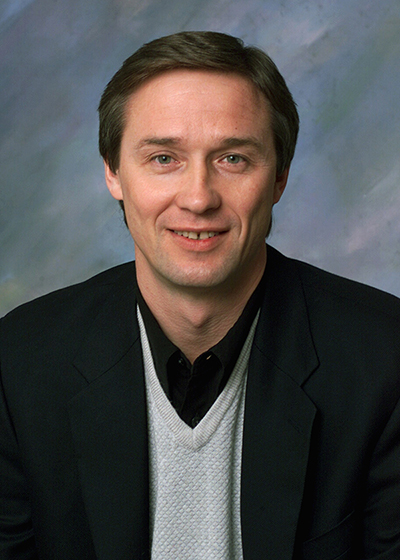ECE professors, grad student co-authors on paper in Nature Communications

A paper from ECE professors Vladimir Shalaev and Alexandra Boltasseva’s research groups has been published in the journal Nature Communications. “High-harmonic generation in metallic titanium nitride” was published Aug. 17, 2021.
High harmonic generation (HHG) is the field of creating high-frequency photons from low-frequency lasers. HHG is the cornerstone of nonlinear optics, with applications in spectroscopy, attosecond science, and so on. In gases, the strong electric field of a laser rips an electron from and accelerates it away from its parent atom; as the electric field changes direction, the electron recollides with the bound electrons, emitting its energy in the form of coherent high-energy pulses, spanning the ultraviolet (UV) to the X-ray spectral regions. More recently, equivalent processes were discovered in solids such as semiconductors and dielectrics, where under an applied field, an electron tunnels from its valence to the conductive state and releases UV radiation upon returning.
In metals, however, a different mechanism is believed to be dominant. Strong electric field of light induces non-linear currents in the metal’s conduction band, giving rise to the overtones of the laser light oscillations frequency. HHG in metals has been elusive because of two reasons. The high reflectivity generally prevents light from penetrating deep into the metal surfaces. Secondly, the low damage threshold of metals causes the metal to quickly degrade and damage at the high laser intensities required for HHG.

Researchers combined titanium nitride, a refractory metal pioneered by the Shalaev-Boltasseva research groups, that has an extremely high laser tolerance, with extremely short laser pulses consisting of a mere few electric field oscillations to address both issues. Titanium nitride's ten-times larger laser tolerance than gold enabled us to hit it with high intensity radiation, emitting shorter wavelength light at up to 110 nm, in the vacuum ultraviolet regime for the first time in a metal. This provides a pathway to understanding the contribution of conduction electrons to HHG. In the future, incorporating refractory metals into the fold allows the design of nanoscale plasmonic to replace bulky gas-based setups for material characterization. Furthermore, metals can be used to fabricate metasurfaces allowing for manipulation of the phase of high energy light, paving the way to focusing the radiation down to nanoscale for use in nanomachining, nanofabrication and medical applications, as well as HHG enhancement for the generation of frequency combs for the next generation of nuclear clocks.

Soham Saha, a graduate student in Purdue’s Elmore Family School of Electrical and Computer Engineering, is a contributing author of the paper. He says it is a truly exciting time to be in the high-harmonics field.
“We have seen HHG from refractory metals for the first time, and believe that it may be a universal trait in metals,” says Saha. “We are now working out the physics, and at the same time, designing compact VUV devices for spectroscopy and material studies.”
He says the groups are now exploring plasmonic devices to boost the efficiency of high harmonic generation, and generating compact, tabletop high-harmonic sources.
In addition to Saha, the following authors contributed to the paper: Aleksey Korobenko, postdoctoral fellow in the University of Ottawa Department of Physics; Alan Godfrey, PhD student in the University of Ottawa Department of Physics; Marina Gertsvolf, adjunct professor in the University of Ottawa Department of Physics; Andrei Naumov, Joint Attosecond Science Laboratory; David Villeneuve, adjunct professor in the University of Ottawa Department of Physics and principal investigator at the Joint Attosecond Science Laboratory; Alexandra Boltasseva, Ron and Dotty Garvin Tonjes Professor in the Purdue University Elmore Family School of Electrical and Computer Engineering; Vladimir Shalaev, Bob and Anne Burnett Distinguished Professor in the Purdue University Elmore Family School of Electrical and Computer Engineering; and Paul Corkum, professor in the University of Ottawa Department of Physics and principal investigator at the Joint Attosecond Science Laboratory.
